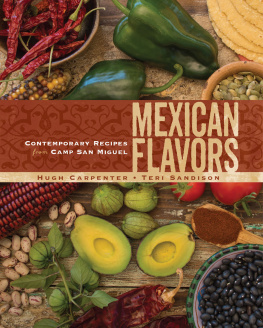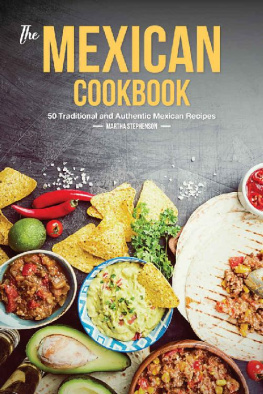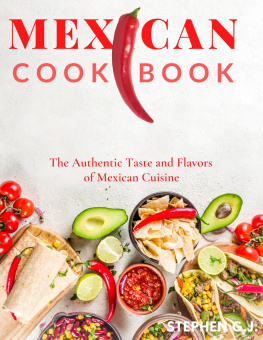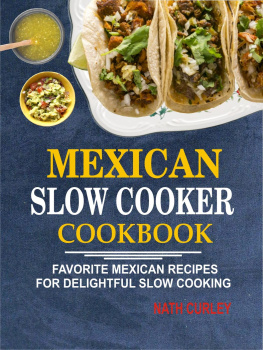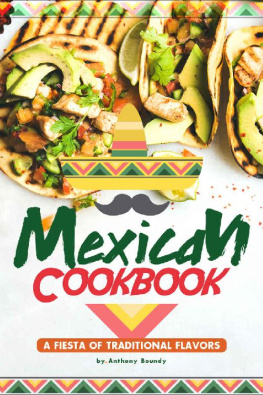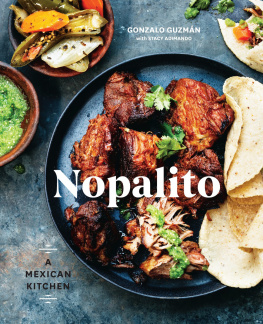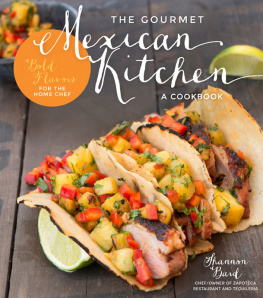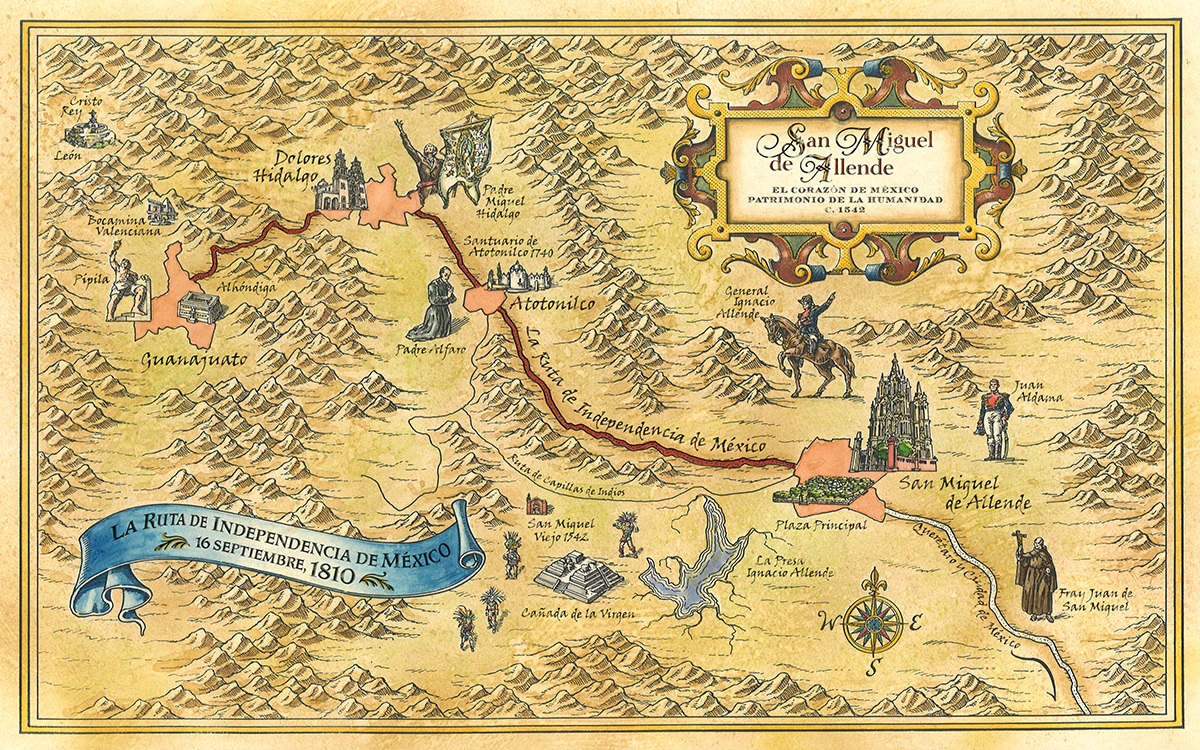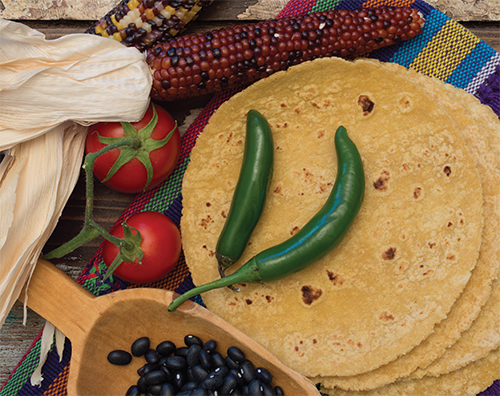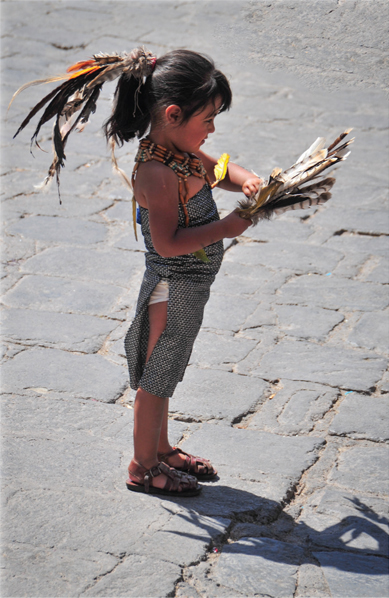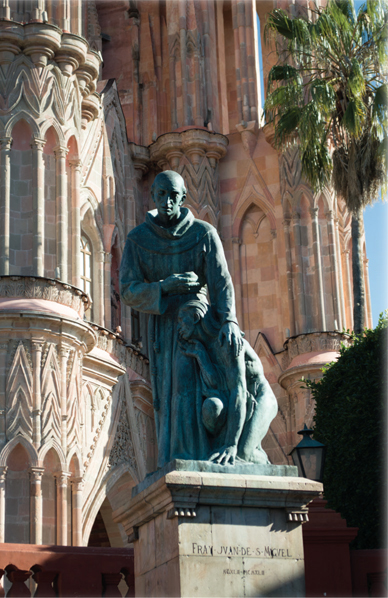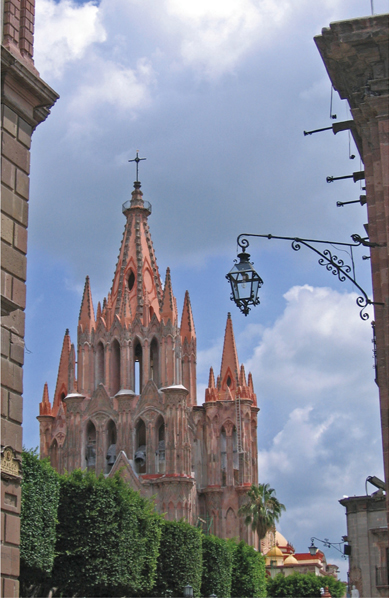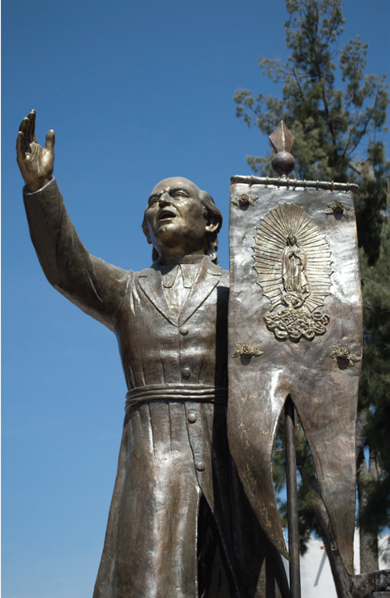Hugh Carpenter - Mexican Flavors - Contemporary Recipes from Camp San Miguel
Here you can read online Hugh Carpenter - Mexican Flavors - Contemporary Recipes from Camp San Miguel full text of the book (entire story) in english for free. Download pdf and epub, get meaning, cover and reviews about this ebook. year: 2014, publisher: Andrews McMeel Publishing, genre: Home and family. Description of the work, (preface) as well as reviews are available. Best literature library LitArk.com created for fans of good reading and offers a wide selection of genres:
Romance novel
Science fiction
Adventure
Detective
Science
History
Home and family
Prose
Art
Politics
Computer
Non-fiction
Religion
Business
Children
Humor
Choose a favorite category and find really read worthwhile books. Enjoy immersion in the world of imagination, feel the emotions of the characters or learn something new for yourself, make an fascinating discovery.
- Book:Mexican Flavors - Contemporary Recipes from Camp San Miguel
- Author:
- Publisher:Andrews McMeel Publishing
- Genre:
- Year:2014
- Rating:4 / 5
- Favourites:Add to favourites
- Your mark:
Mexican Flavors - Contemporary Recipes from Camp San Miguel: summary, description and annotation
We offer to read an annotation, description, summary or preface (depends on what the author of the book "Mexican Flavors - Contemporary Recipes from Camp San Miguel" wrote himself). If you haven't found the necessary information about the book — write in the comments, we will try to find it.
Mexican Flavors is your chance to learn about contemporary Mexican cuisine from a master teacher, Hugh Carpenter. Hundreds of North Americans have traveled to San Miguel to cook with Hugh during the 6-day seminars that he runs with his wife, Teri Sandison, during the winter months. The recipes are based on Hughs cooking school in San Miguel de Allende, Mexico, a famous artist community located in the high mountain country north of Mexico City.
Mexican Flavors includes classic recipes such as Guacamole, Tortilla Soup, and Barbecue Chicken with Mole Sauce. But there are many gastronomic surprises such as Banana Salsa, Quesadillas with Papaya and Brie, Barbecued Caesar Salad with Chile Croutons, and Fallen Kahlua Chocolate Cake. The recipes use a wide range of seasonings to achieve innovative flavors with a Mexican flair - all from ingredients available at every American supermarket. Throughout the book, Hugh is at your side showing you easy preparation and cooking techniques, what can be completed in advance, and in page-after-page illuminating the techniques, the history, and the unique flavors of Mexican cuisine.
Three special sections show an innovative approach to some of Mexicos most famous dishes. Chile Rellenos are filled with Pulled Pork or a Pine Nut Goat Cheese Herb stuffing, and then smoked on the barbecue. Tacos and tostadas are deconstructed so that even those new to Mexican cuisine can create their own masterpiece. And enchiladas, with their fillings of duck, shrimp, or shiitake mushrooms, are a master class on fail-safe ways to create perfection.
Acclaimed as a food photographer, Teri Sandison brings the recipes to life with stunning food photographs. She shows equal skill capturing the mood of San Miguel through shots of everyday life, festivals, markets scenes, and cooking class action shots. Visit San Miguel, a UNESCO World Heritage city, through the lens of Teris camera. Open Mexican Flavors and step into the life of San Miguel de Allende walk through the farmers markets people-watch on the Jardin see behind the doors of old colonial homes and attend the cooking classes at Camp San Miguel. Let master cooking teacher, Hugh Carpenter, lead you on a delicious adventure with new approaches to Mexican cuisine that can be easily reproduced in any American kitchen.
About the Authors
Hugh Carpenter received the award Cooking Teacher of the Year from the International Association of Culinary Professionals (IACP) in 2010. Hugh Carpenter is a popular Napa Valley chef, cooking teacher, and writer. During the last 36 years, over 100,000 people have attended his classes at cooking schools throughout North America. In addition, he has run his own cooking school, Camp Napa Culinary, in Napa Valley for 22 years, and for 9 years Hugh and his wife, Teri Sandison, have operated a cooking school in the Mexican colonial town of San Miguel de Allende. He is the author of 15 cookbooks, all of which have been photographed by his wife. Fusion Food Cookbook was nominated for a James Beard Award in 1995, Chopstix received the IACP nomination for Best Food Photography of 1990, and Pacific Flavors won the IACP award for Best Asian Cookbook and the Whos Who of Cooking Best Food Photography Award in 1988.
Teri Sandison began her art career in painting and drawing at U.C.L.A. She then studied photography at Art Center College of Design, where she specialized in food and wine photography and later was a member of the photography faculty for more than three years. She has done the photography for more than 60 cookbooks from leading publishers, and has clients who have come from across the United States to work with her in her studio. She was also adjunct instructor in food photography and food styling for four years at the Culinary Institute of America, St. Helena. She has collaborated with her chef husband, the cookbook author, Hugh Carpenter, for all 16 of their cookbooks.
CONTENTS
PREFACE: THE INDEPENDENCE ROUTE
INTRODUCTION: SAN MIGUELS CULINARY LANDSCAPE
CHAPTER 1: FLAVOR BUILDING BLOCKS
CHAPTER 2: CORE RECIPES
CHAPTER 3: APPETIZERS SET THE STAGE: THE OPENING ACT
CHAPTER 4: FOUR BELOVED COUNTRY FOODS: TACOS, TOSTADAS, CHILES RELLENOS, AND ENCHILADAS
CHAPTER 5: SALAD SURPRISES
CHAPTER 6: COMPLEX-TASTING SOUPS
CHAPTER 7: SEAFOOD INSPIRED BY MEXICOS COAST
CHAPTER 8: BOLD MEXICAN FLAVORS WITH POULTRY AND MEAT
CHAPTER 9: EASY SIDE DISHES WITH MEXICAN FLAVORS
CHAPTER 10: DESSERTS TO WIN FRIENDS
CHAPTER 11: DRINKS TO REFRESH AND ELEVATE THE SPIRIT
ACKNOWLEDGMENTS
METRIC CONVERSIONS AND EQUIVALENTS
INDEX
Hugh Carpenter: author's other books
Who wrote Mexican Flavors - Contemporary Recipes from Camp San Miguel? Find out the surname, the name of the author of the book and a list of all author's works by series.

